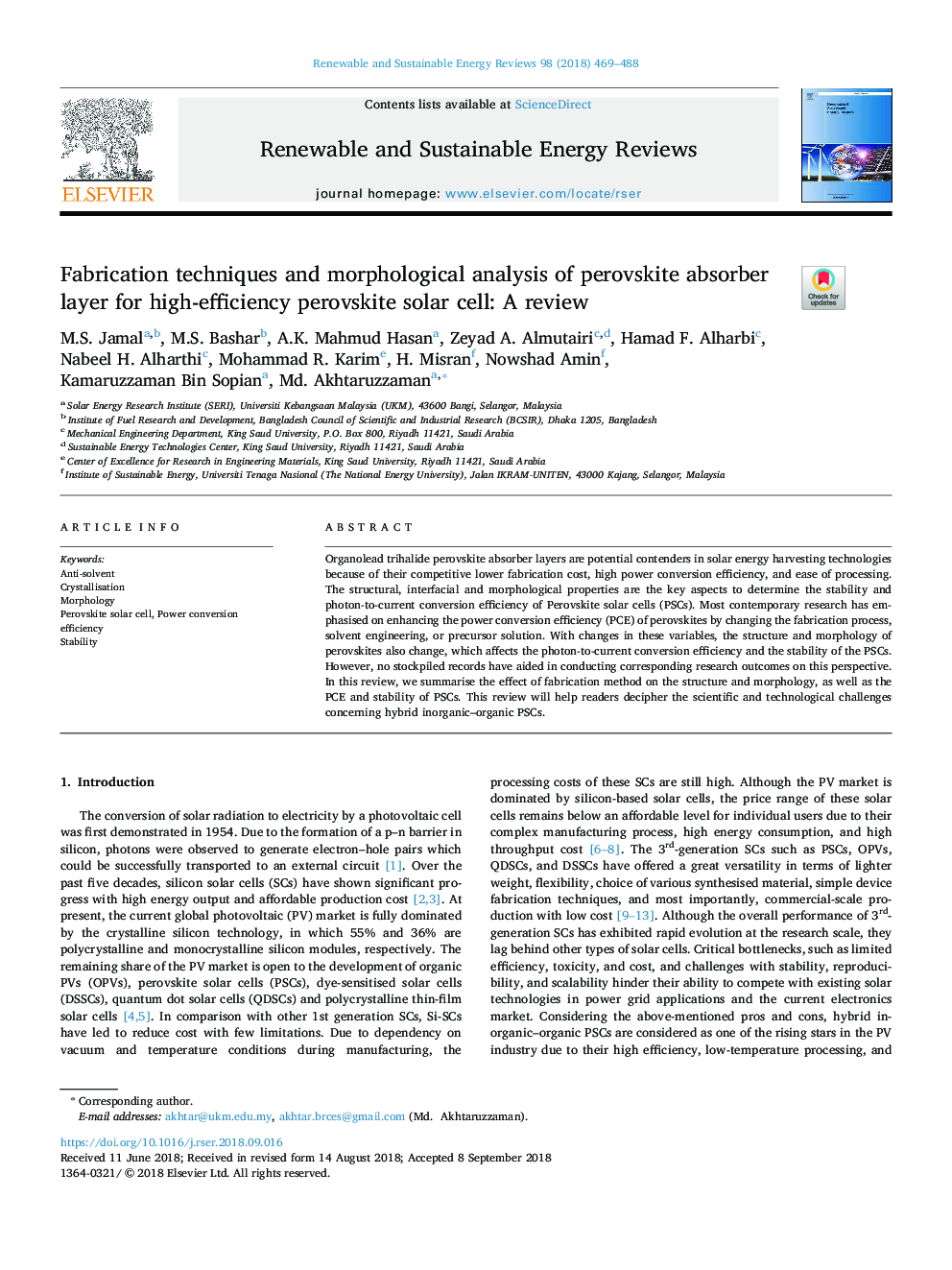| Article ID | Journal | Published Year | Pages | File Type |
|---|---|---|---|---|
| 11026403 | Renewable and Sustainable Energy Reviews | 2018 | 20 Pages |
Abstract
Organolead trihalide perovskite absorber layers are potential contenders in solar energy harvesting technologies because of their competitive lower fabrication cost, high power conversion efficiency, and ease of processing. The structural, interfacial and morphological properties are the key aspects to determine the stability and photon-to-current conversion efficiency of Perovskite solar cells (PSCs). Most contemporary research has emphasised on enhancing the power conversion efficiency (PCE) of perovskites by changing the fabrication process, solvent engineering, or precursor solution. With changes in these variables, the structure and morphology of perovskites also change, which affects the photon-to-current conversion efficiency and the stability of the PSCs. However, no stockpiled records have aided in conducting corresponding research outcomes on this perspective. In this review, we summarise the effect of fabrication method on the structure and morphology, as well as the PCE and stability of PSCs. This review will help readers decipher the scientific and technological challenges concerning hybrid inorganic-organic PSCs.
Related Topics
Physical Sciences and Engineering
Energy
Renewable Energy, Sustainability and the Environment
Authors
M.S. Jamal, M.S. Bashar, A.K. Mahmud Hasan, Zeyad A. Almutairi, Hamad F. Alharbi, Nabeel H. Alharthi, Mohammad R. Karim, H. Misran, Nowshad Amin, Kamaruzzaman Bin Sopian, Md. Akhtaruzzaman,
